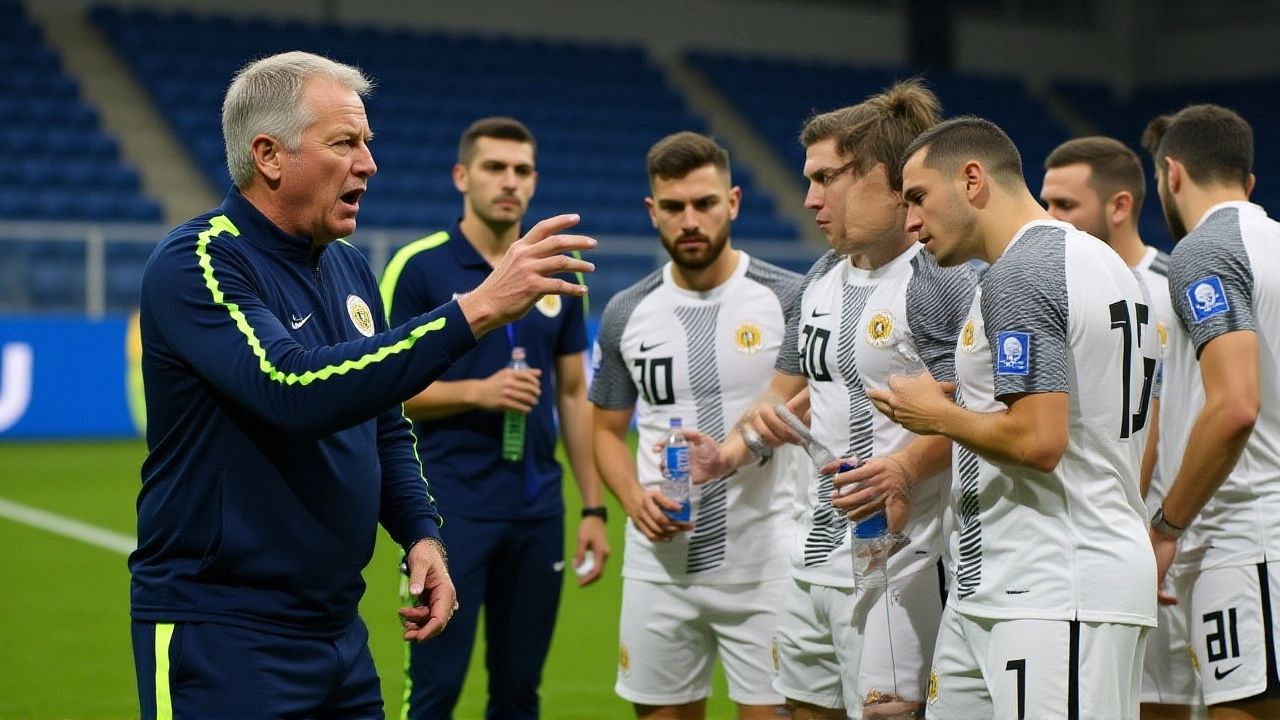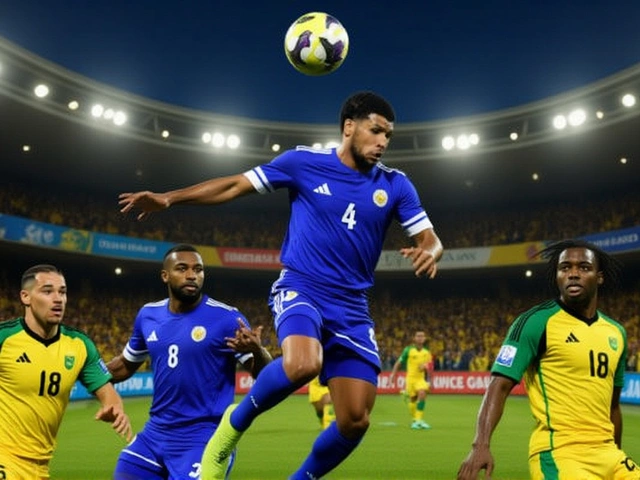On November 19, 2025, at 00:01:07 UTC, a tiny island in the Caribbean changed football history. Curaçao, with just 160,000 people, beat Jamaica in a nail-biting CONCACAF qualifier to secure a spot in the 2026 FIFA World CupUnited States, Canada, and Mexico — becoming the smallest nation ever to reach the tournament. The victory wasn’t just a win. It was a roar from a place most people can’t find on a map. And now, the world has to listen.
A Nation That Refused to Be Overlooked
Curaçao isn’t just small. It’s the kind of place where the national stadium holds fewer people than some high school football teams in Texas. Before this, the record for smallest World Cup qualifier belonged to Iceland, which made history in 2018 with 334,000 residents. Curaçao cut that number in half. And yet, in the final minutes of their decisive match, the islanders didn’t just hold on — they attacked. The final whistle triggered wild scenes in Willemstad, where fans poured into the streets, horns blaring, drums pounding. One team official, unnamed but clearly emotional, told reporters: "I’m so proud of you guys and thank you." Another added: "We’re small, but we are big at heart. We’re going to show them that we are big at heart." This wasn’t luck. It was years of quiet building. The Curaçao Football Federation, based in Willemstad, has spent over a decade investing in youth academies, scouting diaspora talent in the Netherlands, and playing smarter, more disciplined football. They didn’t have the budget of Mexico or the talent pipeline of the U.S. But they had grit. And heart.The Path to History
The 2026 World Cup qualifying process for CONCACAF began in 2023, with 35 teams vying for just 6 direct spots and 2 playoff chances. Curaçao entered as underdogs. Jamaica, their opponent in the final qualifying round, had players in Europe’s top leagues, a national team ranked in the top 50 globally, and a fan base five times larger. Yet Curaçao won 2-1 on aggregate after a tense 1-1 draw in Kingston and a 1-0 home win in Willemstad. The decisive goal came from 19-year-old striker Yanique Haye, a product of the local academy system who plays for a Dutch second-division club. His celebration — arms raised, tears streaming — became the defining image of the tournament. The AFP News Agency video of the match celebration shows audience applause at 0, 17, 27, 35, and 53 seconds, with celebratory music swelling at the final three. The raw emotion wasn’t staged. It was earned. For a nation that only became a constituent country of the Kingdom of the Netherlands in 2010 after the dissolution of the Netherlands Antilles, this was more than football. It was identity.Who Else Is Making History?
Curaçao isn’t alone in rewriting the script. The 2026 World Cup will welcome four debutants: Cape Verde (population ~596,000), Jordan (~10.2 million), Uzbekistan (~34.2 million), and now Curaçao. But only Curaçao qualifies as the smallest by population — and by far. The gap between them and Cape Verde is wider than the Caribbean Sea. This isn’t just a fluke. It’s a sign that football’s global reach is deepening. Even places without professional leagues, without billionaire owners, without TV deals — they can still rise.
What This Means for the Future
Curaçao’s qualification sends a message: talent isn’t tied to population size. It’s tied to structure, belief, and investment. Other small nations — like Suriname, Guyana, or even the British Virgin Islands — now have proof that the dream isn’t impossible. The Curaçao Football Federation has already announced plans to use World Cup revenue to build three new youth academies across the island. They’re also negotiating with Dutch clubs to create a formal talent exchange program. "We’re not done," said a federation insider. "This is just the beginning." Meanwhile, FIFA has quietly adjusted its qualifying format for 2030, adding a new "Small Nation Pathway" — a direct result of Curaçao’s success. No longer will geography be a barrier. Now, it’s a launchpad.Why This Matters Beyond the Pitch
In a world where global sports often feel dominated by billion-dollar franchises and corporate sponsorships, Curaçao’s story is a reminder that football still belongs to the people. No one expected them to win. Not the pundits. Not the bookmakers. Not even their own fans. But they believed. And that’s the magic of sport. It doesn’t care how many people live in your country. It only cares how much heart you put into the game.Frequently Asked Questions
How did Curaçao qualify for the World Cup despite having such a small population?
Curaçao qualified by winning their final CONCACAF qualifying match against Jamaica 2-1 on aggregate, despite being heavy underdogs. Their success came from a decade-long investment in youth development, a strong diaspora network in the Netherlands, and disciplined tactical play under coach Ramon Leeuwin. Unlike larger nations that rely on star power, Curaçao built a cohesive unit that outworked and outsmarted opponents.
What’s the significance of Curaçao being part of the Kingdom of the Netherlands?
Curaçao’s political status as a constituent country within the Kingdom of the Netherlands since 2010 allowed its players to access Dutch youth academies, coaching expertise, and professional leagues. Many Curaçaoan players hold Dutch passports, enabling them to play in Europe — which raised their overall skill level. This unique bridge between Caribbean identity and European football infrastructure was critical to their success.
Who are the other debutant nations at the 2026 World Cup?
Alongside Curaçao, the 2026 World Cup will feature Cape Verde, Jordan, and Uzbekistan as debutants. Cape Verde (population ~596,000) is the next-smallest, but still more than three times Curaçao’s size. Jordan and Uzbekistan, while larger, are also first-time qualifiers from regions historically underrepresented in the tournament. Curaçao’s achievement stands out not just for size, but for the sheer improbability of their path.
How will Curaçao prepare for the World Cup finals?
The Curaçao Football Federation plans to organize a 12-month preparation program, including friendly matches against European second-tier teams, training camps in Spain and the Netherlands, and the construction of three new youth academies funded by World Cup revenue. They’re also negotiating with Dutch clubs to secure loan deals for their top players, ensuring they gain high-level experience before the tournament.
Will Curaçao’s success change how FIFA structures future World Cup qualifiers?
Yes. FIFA has already introduced a "Small Nation Pathway" for the 2030 World Cup qualifiers, guaranteeing at least one direct spot for nations under 1 million population. This was a direct response to Curaçao’s historic run. The move aims to reward merit over size and ensure global representation — making the World Cup more inclusive than ever before.
What’s next for Curaçao’s football program?
Beyond the 2026 World Cup, Curaçao aims to become a regular qualifier by 2030. The federation is pushing for a professional domestic league, which currently doesn’t exist, and has signed a partnership with the Dutch FA to provide coaching certifications. Their goal? To turn their underdog status into a sustainable model for small nations worldwide.




